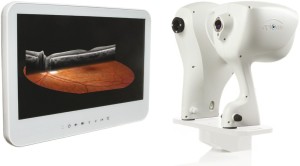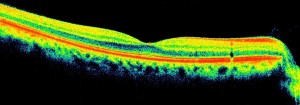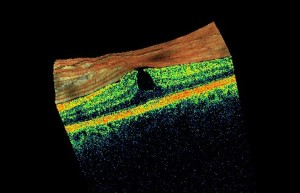https://www.youtube.com/watch?v=ddpNZztzcKg
We are excited to let you know that during your next visit to California Eye Center Optometry, you will experience the benefits of the latest advancement in primary eyecare – the iWellnessExam™. The iWellnessExam uses breakthrough technology called spectral domain optical coherence tomography or SD-OCT. Similar to an MRI or CT scan, the iWellnessExam captures high definition cross sectional images of your retina, which is the back of your eye, and allows our doctors to see in unprecedented clarity what may be invisible with traditional examination methods.
Who would have ever thought that our technology one day would be able to create cross section images of the back of the eye? Just seeing photos of your retina is fascinating enough as it has served a crucial role in monitoring change over a period of time. Much like how you look different than your driver license picture, the retinal changes over time is similar, and with fundus photography we were able to capture aging changes over time and catch eye disease before it progressed. Today, with the introduction of Spectral-Domain Optical Coherence Tomography, we are able to look beyond a photo of the retina and explore the layers of tissue behind. In this scan below, you can appreciate that all the retinal layers are intact with no visible defects. This is what we expect a healthy retina to look like.
In the image below, you will note a faint bluish-green line separating on the left side of the image. On the right side, you can see that bluish-green line is more attached to the retinal layers with slight separation. What you are seeing here is a partial posterior vitre0us detachment where the vitreous gel in the eye slowly starts to shrink and separate away from back of the eye in areas where it may still be attached. With Spectral Domain OCT, we can capture and monitor these normal changes to ensure patient safety and maintenance of good vision.
Many eye problems can develop without warning and progress without symptoms. In early stages, you may not even notice a change in your vision. But sight threatening conditions and diseases such as macular degeneration, glaucoma, diabetic retinopathy and others can be detected with a thorough evaluation of the retina. In this image below, the black opening in the center depicts a hole in the patients macula. Commonly, these patients would complain of vision distortion and a dark or blind spot in the middle of their vision.



